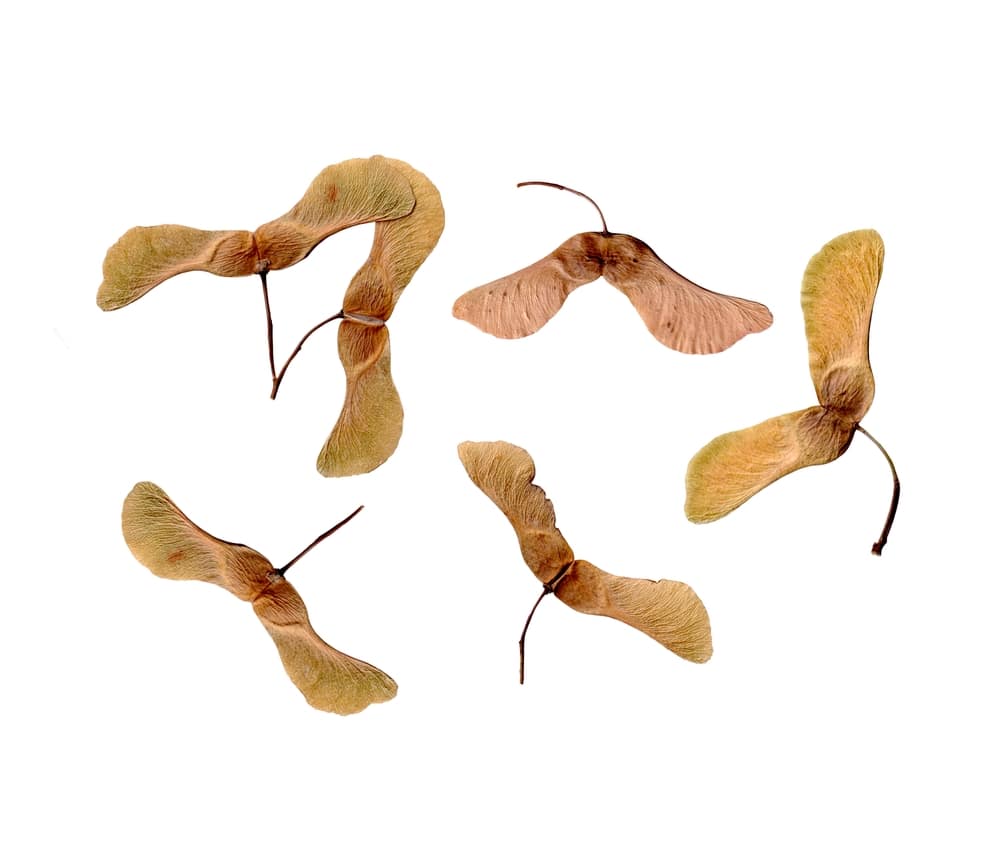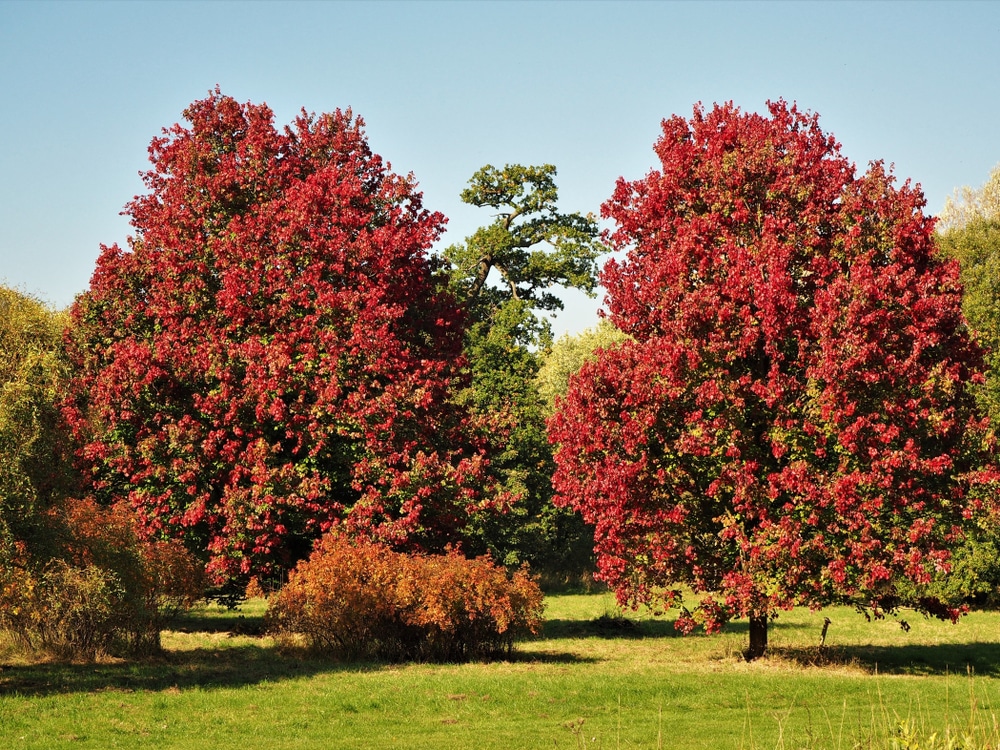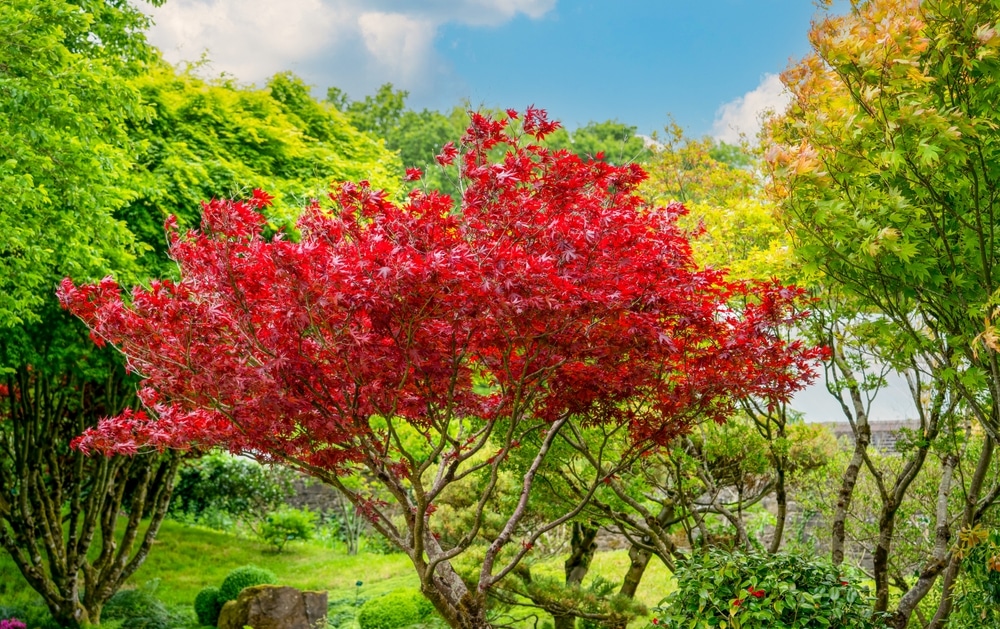While as children many of us loved catching the winged seeds of maple trees that spin to the ground, they are not so much fun to deal with as an adult.
Maple tree helicopters (as many call them) rain down from late spring to early fall. They are a pain to sweep up, and the ones you miss spring into miniature maple trees all over your yard. Here’s what you can do to avoid these pesky flyers.
How To Avoid Cleaning Up Maple Tree Helicopters
Maple tree helicopters, or samaras as they are formally known, are winged fruit that naturally occur on all maple species.
Samaras come from the female flowers of a maple tree. Maple trees can produce both male and female flowers, and there is no way to control what kind of flowers a naturally-occurring maple tree produces, making samara control difficult.
The easiest way to prevent samaras is to pick a maple cultivar that has been bred not to produce fruit.
Unfortunately, there is rarely a scenario where homeowners will have the luxury of choosing the maple species planted on or near their property. Often samaras come from existing maple trees that have been on the property or street for years.
Cleaning Up Maple Tree Helicopters
There are a few ways to clean up maple tree helicopters, including raking, leaf blowing, and sweeping.
Which method you choose to rid yourself of maple tree helicopters will depend on the surface the samaras fall on, the resources you have on hand and the amount of time you have to clean up.
Raking
A maple tree planted in a yard, garden, or lawn will drop its samaras on grass. Like fall leaves, the easiest way to clean up samaras that have fallen in grass is to use a rake to gather them into a pile and then scoop them into a trash bag for disposal.
Leaf Blowing
Homeowners with many maple trees on or near their property may consider using a leaf blower to cut down on the labor needed to clean up a large volume of samaras.
While operating a leaf blower, use eye and ear protection and follow the equipment’s best use practices.
Leaf blowers are expensive and will incur maintenance costs over time. If the only thing you will be using your leafblower for is samaras, it may be more economical to use a rake or broom to clean up samaras.
Sweeping
If your outdoor space is paved or hardscaped use a broom to clean up fallen samaras. A household broom will suffice, but a durable push broom may be a worthwhile investment if your paved outdoor space is large. You can also use a lawn sweeper or bagger if you have a lot of maple trees.
How To Get Rid of Maple Tree Helicopters Once and For All
The only way to ensure a maple tree does not drop samaras on or near your property is by removing the tree. If the maple tree that drops samaras is below 5 inches in diameter, it should be easy to remove or even transplant.
However, removing maples over 5 inches in diameter will require specialized equipment and a lot of labor.
Tree removal prices vary by location and will depend on the size of the tree and how easy it is to access the tree. Call your local forestry professionals for a removal quote.
Bear in mind that trees are considered property. Do not remove, prune, or otherwise perform work on trees that belong to your neighbors or the city. Performing work on trees without the express written consent of the tree owner may lead to legal ramifications.
Do I Have To Clean Up Samaras?
No, you do not have to clean up samaras. Samaras are considered organic matter and are OK to be left alone in most cases. However, many of the samaras nestle into the ground and turn into maple trees. It’s easy to pick the tiny maple sprouts but leave them too long and you will have to dig them out.
If you belong to a homeowner’s association or similar organization, there may be a clause that states homeowners are responsible for picking up leaf litter. If this is the case, you will have to clean up samaras.


